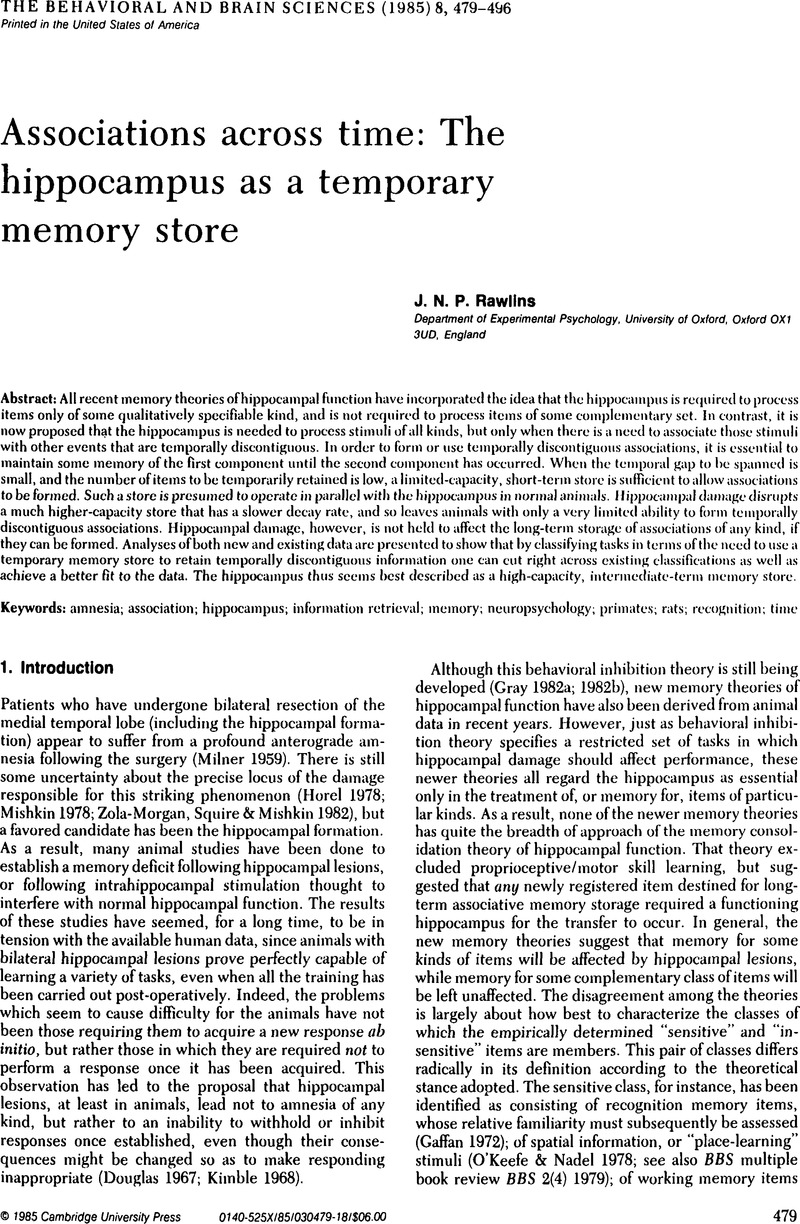Crossref Citations
This article has been cited by the following publications. This list is generated based on data provided by Crossref.
Dennett, Daniel C.
1995.
Overworking the hippocampus.
Behavioral and Brain Sciences,
Vol. 18,
Issue. 4,
p.
677.
Hemsley, David R.
1995.
Psychopathology and the discontinuity of conscious experience.
Behavioral and Brain Sciences,
Vol. 18,
Issue. 4,
p.
683.
Lubow, R. E.
1995.
Human consciousness: One of a kind.
Behavioral and Brain Sciences,
Vol. 18,
Issue. 4,
p.
689.
Eichenbaum, Howard
and
Cohen, Neal J.
1995.
Consciousness, memory, and the hippocampal system: What kind of connections can we make?.
Behavioral and Brain Sciences,
Vol. 18,
Issue. 4,
p.
680.
Gray, Jeffrey A.
1995.
The contents of consciousness: A neuropsychological conjecture.
Behavioral and Brain Sciences,
Vol. 18,
Issue. 4,
p.
659.
Ellard, Colin G.
1995.
Context and consciousness.
Behavioral and Brain Sciences,
Vol. 18,
Issue. 4,
p.
681.
Swerdlow, Neal R.
1995.
Don't leave the “un” off “consciousness”.
Behavioral and Brain Sciences,
Vol. 18,
Issue. 4,
p.
699.
Gray, Jeffrey A.
1995.
Consciousness and its (dis)contents.
Behavioral and Brain Sciences,
Vol. 18,
Issue. 4,
p.
703.
Myers, Catherine E.
Gluck, Mark A.
and
Granger, Richard
1995.
Dissociation of hippocampal and entorhinal function in associative learning: A computational approach.
Psychobiology,
Vol. 23,
Issue. 2,
p.
116.
Toates, Frederick
1995.
On giving a more active and selective role to consciousness.
Behavioral and Brain Sciences,
Vol. 18,
Issue. 4,
p.
700.
Velmans, Max
1995.
The limits of neurophysiological models of consciousness.
Behavioral and Brain Sciences,
Vol. 18,
Issue. 4,
p.
702.
Kinsbourne, Marcel
1995.
Septohippocampal comparator: Consciousness generator or attention feedback loop?.
Behavioral and Brain Sciences,
Vol. 18,
Issue. 4,
p.
687.
Dennis, Simon
and
Humphreys, Michael
1995.
Possible roles for a predictor plus comparator mechanism in human episodic recognition memory and imitative learning.
Behavioral and Brain Sciences,
Vol. 18,
Issue. 4,
p.
678.
Reeke, George N.
1995.
Unitary consciousness requires distributed comparators and global mappings.
Behavioral and Brain Sciences,
Vol. 18,
Issue. 4,
p.
693.
Revonsuo, Antti
1995.
Prospects for a cognitive neuroscience of consciousness.
Behavioral and Brain Sciences,
Vol. 18,
Issue. 4,
p.
694.
Frith, Chris
1995.
Consciousness is for other people.
Behavioral and Brain Sciences,
Vol. 18,
Issue. 4,
p.
682.
Stephens, G. Lynn
and
Graham, George
1995.
Ultimate differences.
Behavioral and Brain Sciences,
Vol. 18,
Issue. 4,
p.
698.
Ivanitsky, Alexei M.
1995.
Information synthesis in cortical areas as an important link in brain mechanisms of mind.
Behavioral and Brain Sciences,
Vol. 18,
Issue. 4,
p.
686.
Lioyd-Jones, T. J.
Donnelly, N.
and
Weekes, B.
1995.
Correlating mind and body.
Behavioral and Brain Sciences,
Vol. 18,
Issue. 4,
p.
688.
Umiltà, Carlo
and
Zorzi, Marco
1995.
Consciousness does not seem to be linked to a single neural mechanism.
Behavioral and Brain Sciences,
Vol. 18,
Issue. 4,
p.
701.



